Saturday was a great day to get out with the camera for a couple of hours and I was excited to find one of our smallest owls, the Northern Saw-Whet Owl whose scientific name is Aegolius acadicus. Acadicus is Latin for ‘from Acadia’ referring to the area in Canada where this little owl was first collected. Saw-Whets are quite small (20 cm in length) and very cute however they are aggressive hunters who although preferring voles & mice will also eat song birds, large insects and even amphibians. They often take more food than they can consume and store the extra in trees where it is frozen until needed. When hungry the Saw-Whet will ‘incubate’ the frozen food, just like it would an egg, to thaw it before eating.
Northern Saw-Whets are most commonly seen in South Eastern Ontario from October to early December and then again from February until mid-March. They are usually found relatively low down (6-12′) in heavily covered coniferous trees and almost always close to the trunk. For these reasons they are well hidden and its hard to spot them. From a photographic perspective they are usually very difficult to capture well because the view is normally obstructed and the light less than ideal.
Sleeping Beauty
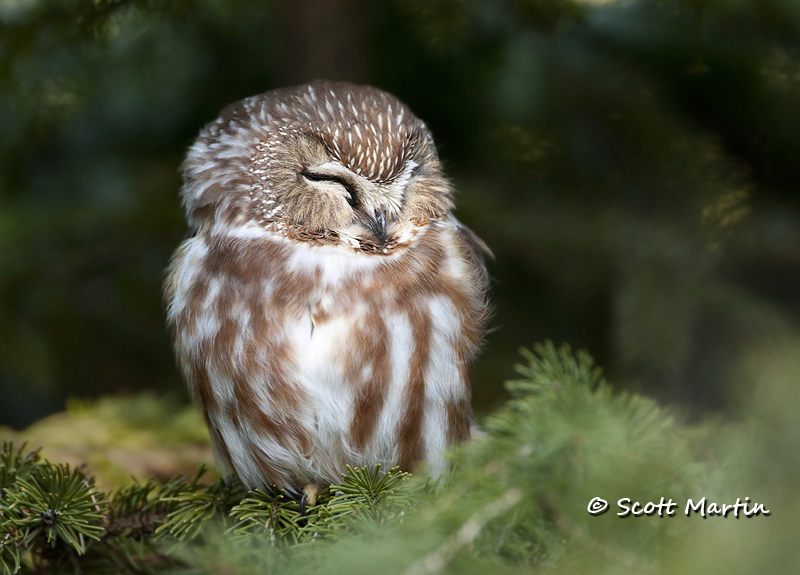
.
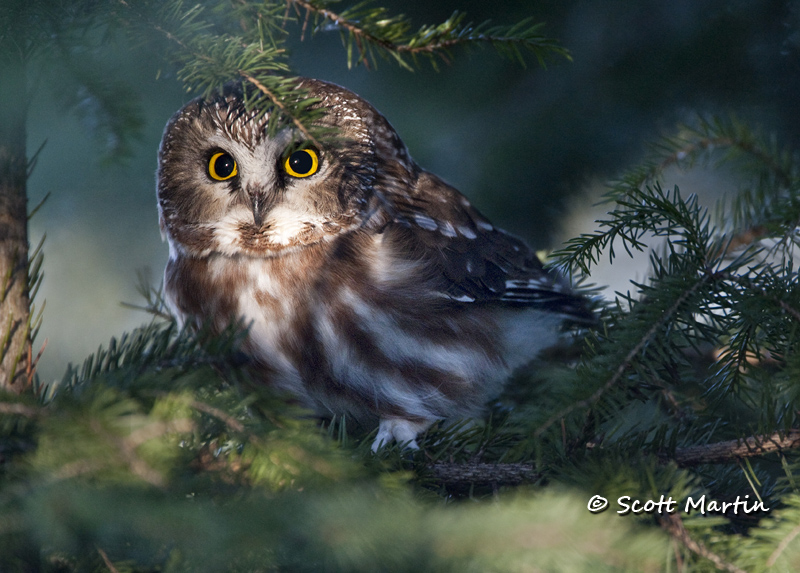
.
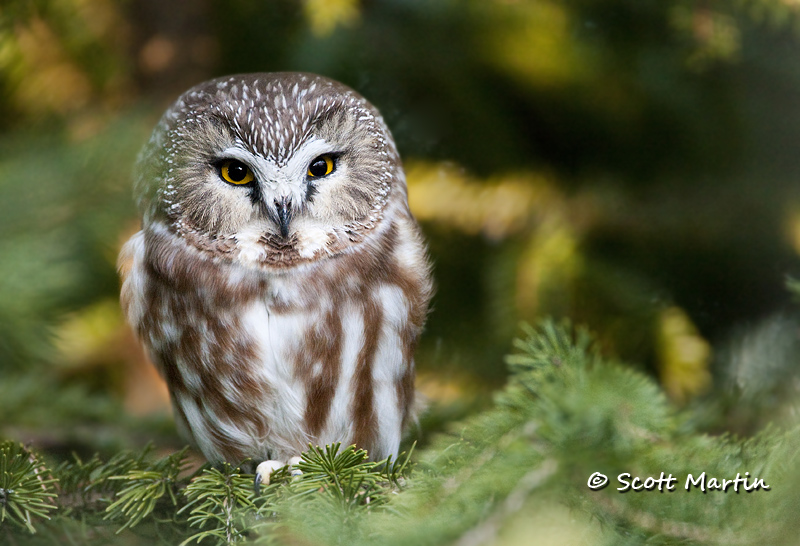
The next image is included to show how relatively large the feet & talons of the Saw-Whet are….an efficient hunter!
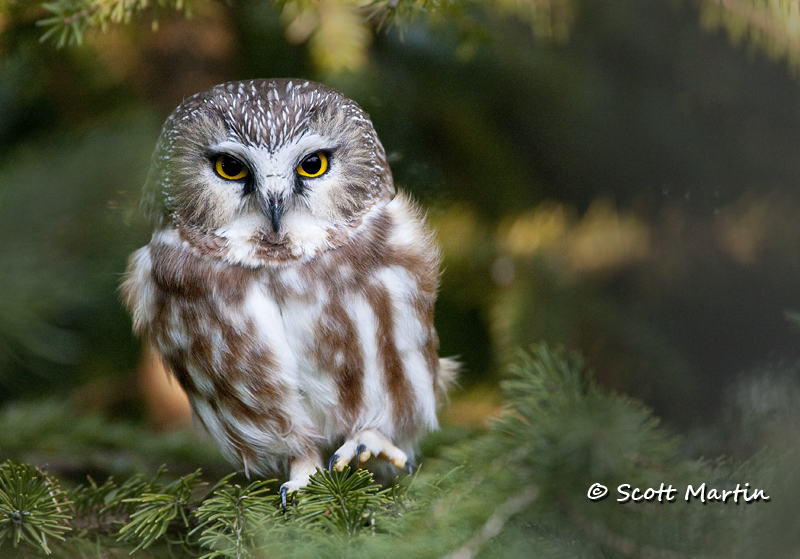
Owls cough up pellets that contain the indigestible parts of their prey (usually bones and fur or feather bits). I was fortunate enough to capture this Saw-Whet getting rid of a pellet.
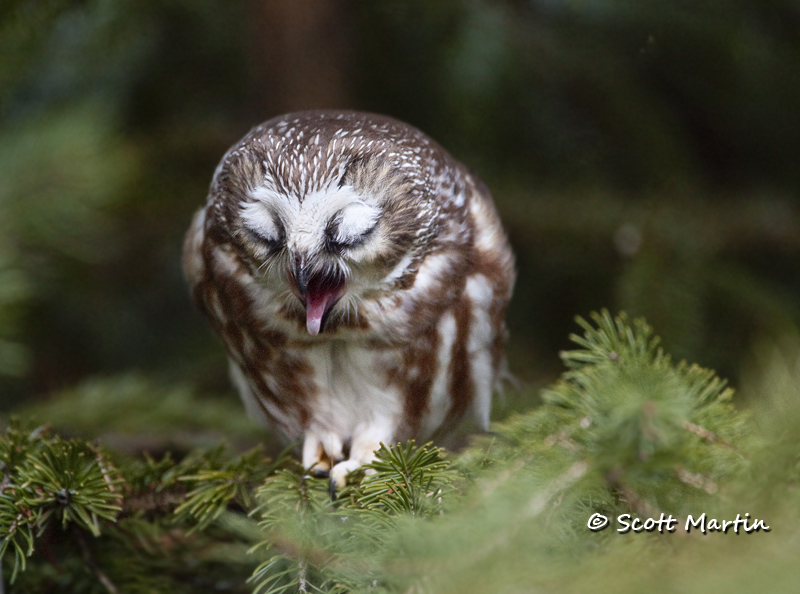
.
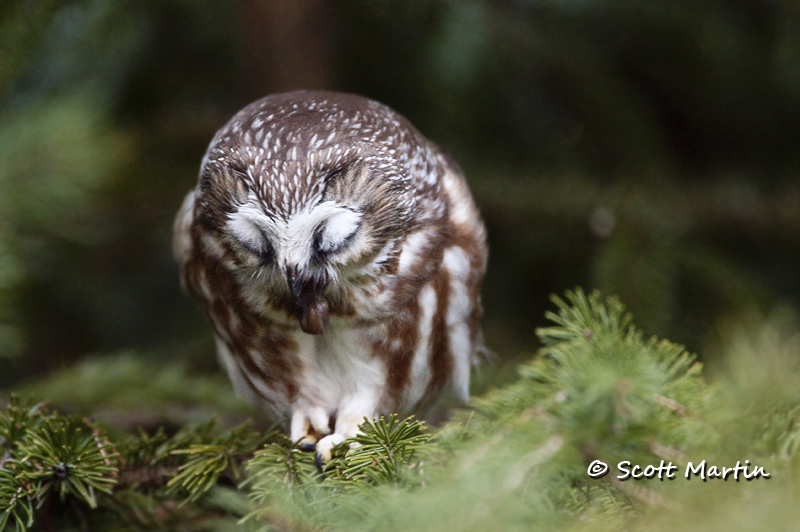
If you would like to see some more owls, you can find them in the Owl Gallery
Here are a couple of other birds from last Saturday, a Northern Cardinal and a Black Capped Chickadee.
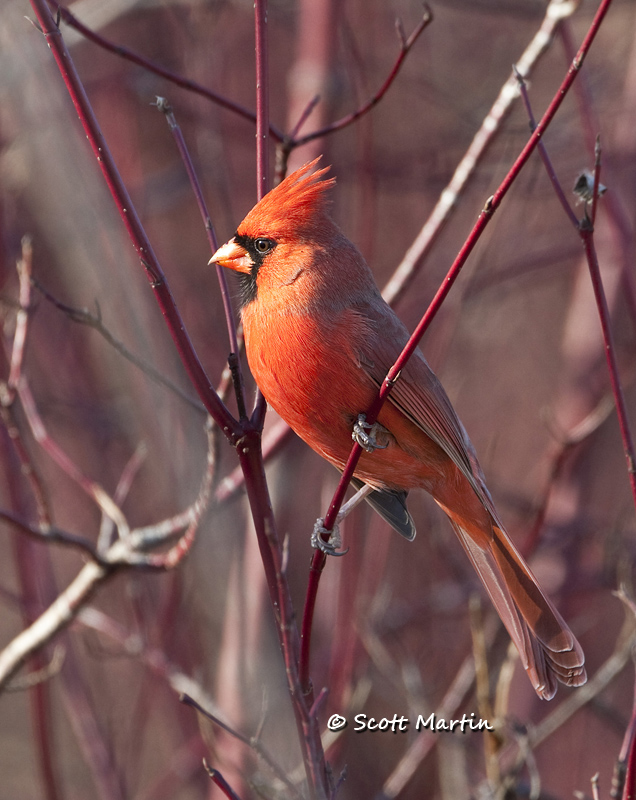
.
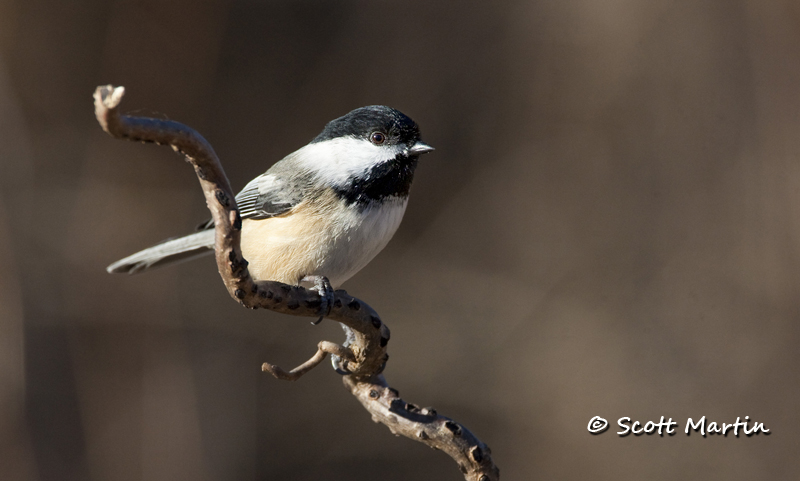
You can find more Cardinal images in the Sparrows, Grosbeaks, Buntings & Finches Gallery
More Chickadees can be seen in the Chickadees, Nuthatches & Creepers Gallery


You have captured the beauty of God’s Ornithologic creatures so well!
Nice find and great images! Unfortunately, I haven’t seen one this year yet.